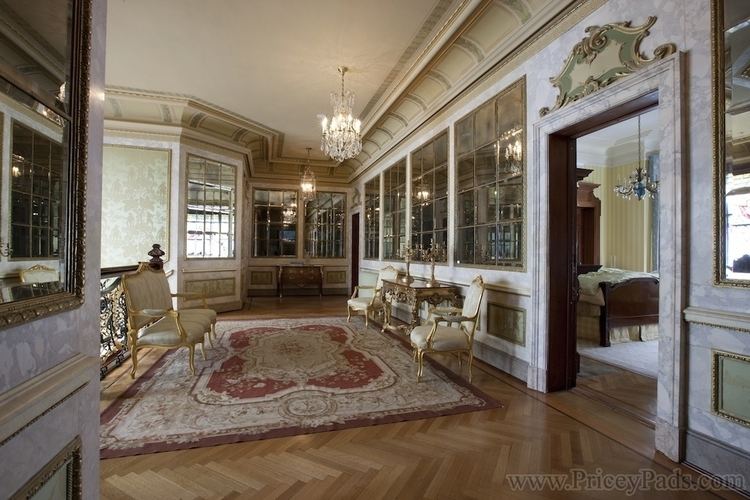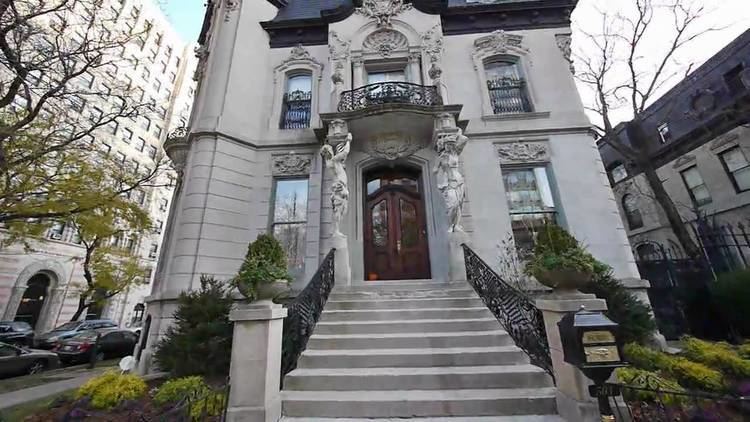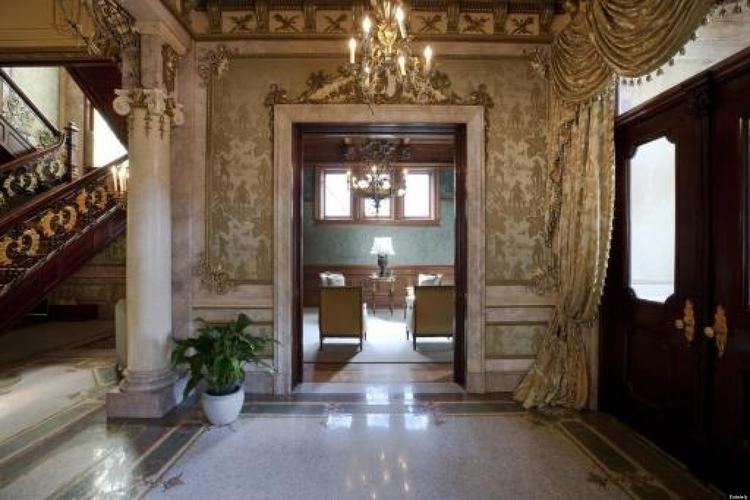Built 1896 Designated CL June 12, 1974 Area 3,238 m² | NRHP Reference # 73000694 Opened 1896 Added to NRHP 1971 | |
 | ||
Architectural style Second Empire architecture Similar Theurer‑Wrigley House, Wheeler‑Kohn House, Raber House, Cable House, Race House | ||
Francis j dewes house a chicago landmark part 1
The Francis J. Dewes House is a house located at 503 West Wrightwood Avenue in Chicago, Illinois, United States. The house was built in 1896 by Adolph Cudell and Arthur Hercz for brewer Francis J. Dewes. It was designated a Chicago Landmark on June 12, 1974. It was added to the National Register of Historic Places on August 14, 1973
Contents
- Francis j dewes house a chicago landmark part 1
- Francis j dewes house part 2 the grand entertaining spaces
- Interior
- References

Wealthy German immigrants, including Wacker, Leight, Gaetner, Deever, and Schlosser, constructed luxurious mansions east of Clark Street in Chicago's Lincoln Park. Francis Dewes, a Chicago brewer and millionaire, built the most elaborate home in the Lincoln Park still standing - Dewes Mansion at 503 West Wrightwood Avenue.

Architects Adolph Cudell and Arthur Hercz designed the Dewes mansion, and it was completed in 1896. Hercz was originally from Hungary, and Cudell was no stranger to building grand residences for Chicago's wealthy elite. In 1879 Cudell also designed the Rush Street mansion of prominent businessman Cyrus Hall McCormick.

The Dewes mansion was built for Francis J. Dewes, a brewer. Dewes was born in Prussia in 1845, the son of a brewer and member of the German parliament. In 1868 Francis Dewes emigrated to Chicago and found employment as a bookkeeper for established brewing companies such as Rehm and Bartholomae and the Busch and Brand Brewing Company. He rose through the ranks, and in 1882 he founded his own successful brewing firm. His mansion was built to reflect his own Prussian background and European tastes.
Taken as a whole, the building is an unusual example of a German inspired style, influenced by the neo-Baroque architecture of Ecole des Beaux-Arts in Paris at the end of the 19th century. The exterior of this lavish gray-stone is decorated with carved stonework and ornamental cornices and lintels. The entrance to the mansion is flanked by caryatids, tall figures acting as columns, supporting a balcony over the doorway.

Francis j dewes house part 2 the grand entertaining spaces
Interior

The mansion is three story Baroque style with two caryatids supporting the balcony over the main entrance. There are many figures and ornamental groups carved in the Bedford stone exterior of the building. Oranmental iron, hand-wrought, forms the balconies, window trim, porches, and railings; all in lavish detail of the Baroque style. There is a mansard roof with hand wrought copper fence surround. The exterior of the building is considered to be Louis XV style that later spread to all the capitals of Europe. The large stained glass window which extends from the main stairway landing of the building up to the second floor is the work of a famous Belgian artist with figures and flowers in a springtime motif. The artist was engaged to design a window to fit the opening and came to Chicago especially to work out the details and return to Belgium to personally supervise the firing of the glass and making of the window. On the first floor of the elegant interior of this building one immediately notices upon entering the foyer the huge fireplace on the East wall with marble columns facing the magnificent staircase leading to the second floor; immediately ahead upon entering is the wishing well equipped with running water and statue. The floors are Italian Mosaic and marble arranged in panels with overlay of gilded ornamental plaster molding gracing the walls.
Ornamental iron, hand wrought, is used as a decor on the stairway, as lighting fixtures and ornamentation. This work was executed in Germany and exhibited at the Columbian Exposition in 1893 prior to being installed in the building. It received the grand prize of merit both for design and craftsmanship. The library of Gothic architecture, was brought from Europe where it was designed and erected - then dismantled and shipped to Chicago to be erected again. This room is on the right as you enter the foyer. The wood paneling, ornamental beams, molding, and siding consist of East Indian mahogany with a French hand polished finish.
The fireplace was removed from an old European castle and the wood work designed and built around same. The walls above are finished with exquisite gold and silk tapestry woven especially for this room. The Drawing Room on the left as you enter is French Renaissance with ornamental hand sculptured gypsum figures^ heavy relief moldings and cornices done in Baroque style. The Italian marble fireplace with a huge mirror covers East wall. The ceiling is painted with landscape scenes and figures. The wall panels are French Brocade especially woven in Europe for the family.
The Music Room East Indian Mahogany woodwork and French Silk tapestry walls and a Brazilian onyx polished marble fireplace is located between the Drawing Room and the Dining Room. The Dining Room is of Flemish design - with quarter sawn Flemish Oak built and assembled in one of Chicago's own woodworking shops. The wood was imported and cured for a number of years then painstakingly designed, cut, and finished into wood beams, paneling and frames. The figures were designed in clay in Germany and shipped to Chicago, where they were carved into wood by a process that is now almost unheard of. There is not the slightest crack or flaw that has developed in any of these pieces even after years of exposure. The glass panels used in this room were imported from Venice and are of exquisite design.
